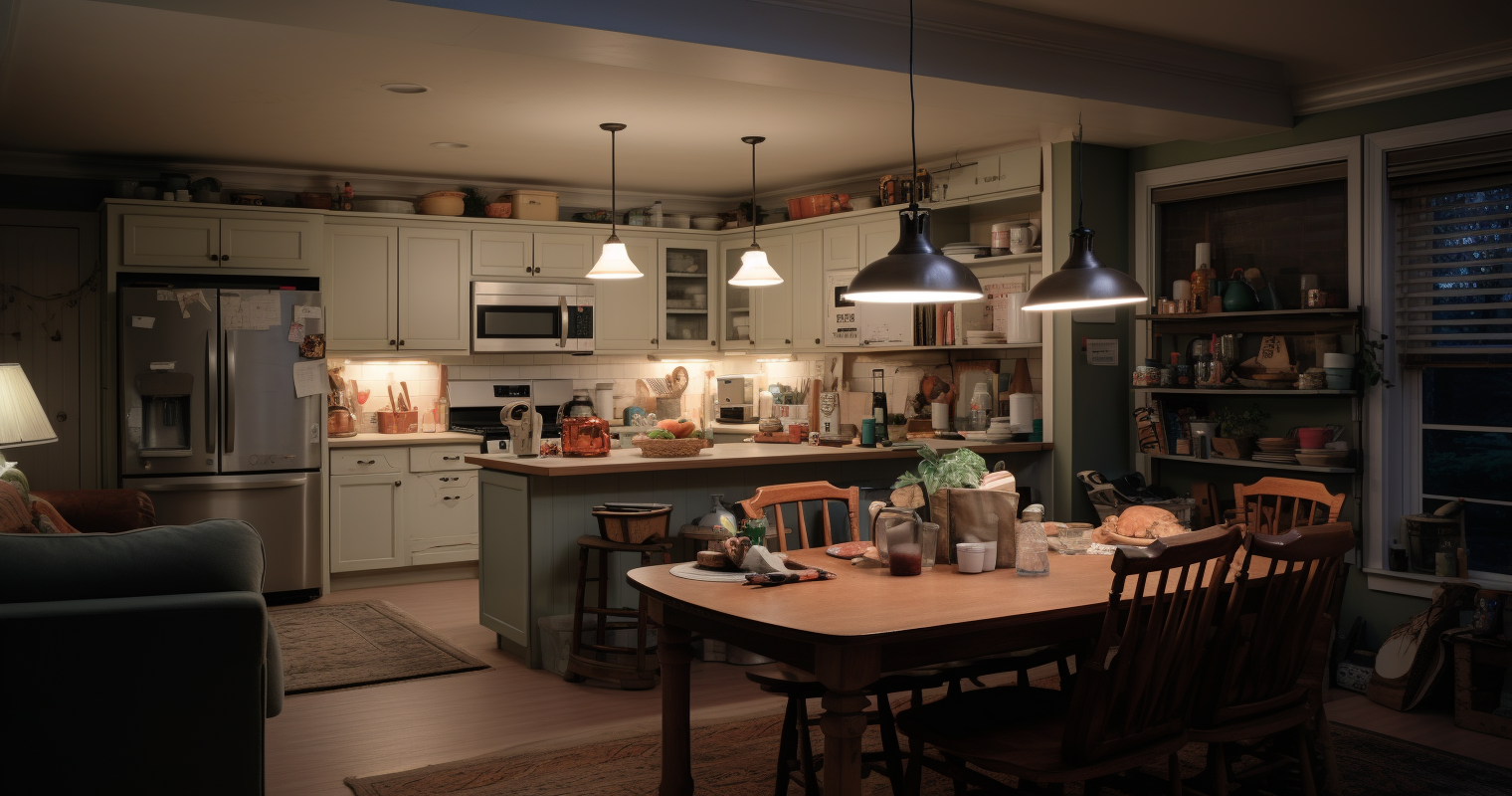How Much Electrical Wire In A House: “How much electrical wire is needed in a house?” Get ready to untangle the mysteries as we navigate through a comprehensive calculation guide that sheds light on your home’s electrical needs. According to statistics, improper electrical installations are a leading cause of home fires.
Calculating electrical wire requirements for a house
The electrifying world of home wiring! Have you ever wondered about the intricate network of electrical wires running behind your walls and powering your gadgets? Today, we’re unraveling the mystery and delving into the nitty-gritty of calculating.
Electrical wire requirements for a house.
In a world dependent on electricity, understanding wire calculations is crucial for safety and cost-efficiency. Improper calculations can lead to flickering lights, overloaded circuits, or fire hazards. Let’s explore this crucial aspect of home planning.
Picture this:
You’re gearing up to design your dream home, or perhaps you’re renovating your cozy nest. Regardless of the project’s scale, one thing remains constant—your need for a reliable, people-first approach to wiring. When it comes to your home’s electrical framework, guesswork simply won’t cut it. Accurate calculations form the backbone of a secure and functional electrical system.
Did you know that improper electrical installations are one of the leading causes of home fires? Shocking, right? No pun intended. By understanding the significance of accurate wire calculations, you’re not just ensuring smooth operations; you’re also enhancing the safety of your loved ones. Imagine enjoying a hot shower without worrying about circuit breakers tripping or watching TV without the constant fear of power surges.
And here’s the kicker:
Accurate wire calculations can also save you a bundle in the long run. Think about it—choosing the right wire length and type prevents unnecessary waste and expense. You won’t find yourself buried in a heap of excess wire, or worse, falling short and having to redo the entire installation.
How Much Electrical Wire In A House: Key Factors
“How much electrical wire is needed in a house?” the answer isn’t a simple one-size-fits-all solution. Several key factors come into play, each influencing the amount of wire your house requires.
Square Footage, Number of Rooms, and Appliances
The size of your home plays a significant role in determining the amount of electrical wire required. A sprawling mansion will naturally demand more wiring than a cozy cottage. But it’s not just about size; the number of rooms also matters. Each room brings its own set of electrical needs—outlets, switches, and lighting fixtures. Moreover, consider your daily conveniences—modern appliances that make life easier and more enjoyable. From the fridge that stores your groceries to the entertainment system that keeps you entertained, each appliance adds to the wiring equation.
Impact of Electrical Code Requirements and Local Regulations
Enter the world of codes and regulations—the unsung heroes of electrical safety. These guidelines dictate the minimum standards for wiring, ensuring your home is a haven of security. Local regulations also come into play, taking into account factors such as climate and seismic considerations. Compliance with these codes isn’t just a legal obligation; it’s your ticket to a secure and functional electrical system that stands the test of time.
Voltage and Circuit Types in Wire Calculations
Voltage isn’t just an abstract concept—it’s a crucial consideration in wire calculations. Higher-voltage systems require thicker wires to handle the increased electrical load. Additionally, the type of circuits matters. You’ve got your standard circuits for lighting and outlets, and then there are dedicated circuits for power-hungry appliances. The role of voltage and circuit types in wire calculations isn’t just about avoiding overloads; it’s about ensuring your home’s electrical flow is smooth and efficient.
Calculating Wire Length for Different Rooms
Now that we’ve grasped the key factors, let’s zoom in and tackle the art of calculating wire length for different rooms. Your living room, bedroom, kitchen—each space has unique electrical requirements, and no, it’s not just about how far the outlet is from the TV.

Living Room
Imagine the living room—the heart of your home’s social life. To calculate wire length here, consider the placement of lighting fixtures, power outlets, and entertainment systems. Account for the distance between the outlets and the entertainment center to avoid unsightly cords snaking across the floor.
Bedroom
In the bedroom, focus on convenience. Calculate the wire length needed for outlets near the bed, lighting fixtures, and perhaps a cozy reading nook. Additionally, don’t forget to account for any future furniture arrangements that might require additional outlets.
Kitchen
The kitchen, a hub of culinary creativity, requires careful wire calculation. Consider outlet locations for gadgets, lighting over workspaces, and future-proofing for evolving technology like smart fridges that connect to the world.
It’s not just about reaching from point A to point B. Considerations for light fixtures, outlets, and switches should be strategic and ergonomic, ensuring your wiring system enhances your living experience, not hampers it. Additionally, factor in the layout—walls, corners, and cabinets that may influence your wiring pathways.Additionally, factor in the layout—walls, corners, and cabinets that may influence your wiring pathways.

Where we’ll delve into addressing appliances and special considerations. From HVAC systems that keep you comfortable to home theaters that make movie nights unforgettable, we’ll guide you through wiring needs that go beyond the ordinary. For more details refer to this article on Seller’s Checklist: Electrical Requirements When Selling A House. And refer to this article on How Much Wire Goes Into a New House – Garage Journal Forum.
Estimating Wire Length: Step-by-Step Process
Calculating wire lengths for different sections of the house might seem like a daunting task, but fear not! We’re here to break it down into a simple step-by-step process that’ll have you estimating with confidence.
| Step | Description |
|---|---|
| Room Breakdown | Divide the house into rooms and areas. Identify each space’s electrical needs, including outlets, light fixtures, switches, and specialized appliances. |
| Determine Wiring Pathways | Visualize efficient wiring pathways, considering walls, ceilings, and potential obstacles. Minimize unnecessary lengths by choosing the shortest and most practical routes. |
| Measurement and Calculation | Use a measuring tape to determine distances between outlets, fixtures, and appliances. Add up these distances for each room. Incorporate a safety margin for adjustments. |
| Gauge Selection | Consult a wire gauge chart to select the appropriate gauge based on the current load and distance. Choosing the right gauge ensures safe and efficient current flow. |
| Online Calculators | Online calculators and tools can provide accurate estimates based on room dimensions, appliances, and circuits. Input accurate data for reliable results. |
Using Online Calculators and Tools

Online wire calculators and tools can be your best friends when it comes to precise estimates. These tools take your inputs—room dimensions, appliances, and circuits—and churn out accurate wire length recommendations.
But Wait! Accuracy Matters
While online tools are fantastic, they’re only as good as the data you provide.
Where to Find Reliable Calculators
Recommendations go a long way, and that holds true for online calculators too. Seek out reliable websites or software from trusted sources in the electrical community. Whether it’s an established electrical forum or a well-known industry website, credibility matters.
So, whether you’re a math enthusiast or someone who’d rather not crunch numbers, estimating wire lengths can be both accurate and hassle-free. This isn’t just about mathematics; it’s about ensuring your home is powered efficiently and safely.
Frequently Asked Questions
What factors influence the amount of electrical wire needed in a house?
The amount of wire required depends on square footage, the number of rooms, appliances, and even local regulations.
How do electrical codes impact wire calculations?
Electrical codes set safety standards and dictate the minimum wiring requirements, ensuring your home is safe and compliant.
Why is voltage important in wire calculations?
Voltage affects wire thickness, and different circuits require varied gauges to handle electrical load effectively.
How do I calculate wire length for different rooms?
Break down each room’s electrical needs, measure distances for outlets and fixtures, and consider wiring pathways.
What’s the significance of using online wire calculators?
Online tools simplify estimation by considering room dimensions, appliances, and circuits, ensuring accuracy.
Where can I find reliable online wire calculators?
Trusted industry websites and electrical forums offer reliable calculators for accurate wire length recommendations.
How can accurate wire calculations benefit me?
Accurate calculations prevent waste, enhance safety, and optimize efficiency, making your home’s electrical system reliable and cost-effective.
Conclusion
Now that you have information, formulas, and tools, you can carefully wire your home. It’s not just about volts and amps when you do accurate wire calculations; they’re also about making sure you and your family are safe. This means that whether you’re building a new home or remodeling an old one, let your math lead you to a safer and more energy-efficient one. Start the process of wiring your home right now, and you’ll see how bright and beautiful a well-planned electrical system can make it.
Thank you for reading!
